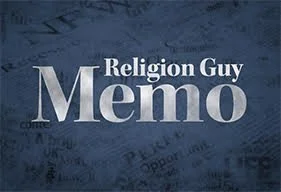Pope Francis’s extraordinary Synod of Bishops, consisting of two meetings last October and the concluding session next October, is dealing with “synodality.”
What? The media and Catholic activists are all energized about such topics as letting women be deacons, or married men be priests, or softened LGBTQ+ policies, or allowing Communion for divorced members who remarry, or for Protestants.
Just possibly something on those might occur next year. But for certain the delegates will try to fill out that mysterious, Zen-like “synodality” term — which means some sort of organizational revamp so male and female lay parishioners are more closely engaged in the life of their church. Some call the whole puzzle Vatican III Lite.
In the flow of comment after the recent first session, Claire Giangravè, Religion News Service’s Vatican correspondent, filed a particularly savvy article on realistic changes required for any substantive doctrinal shifts in that direction. Not a simple process because, as the headline said, “To remake church power in Francis’ vision, synod calls for changes to canon law.”
In the interim leading to next October’s session, The Guy thinks the news media should be tracking down experts on the canon law code, which was revised in 1983 under Pope John Paul II to accommodate the documents from the Second Vatican Council. (Note: Eastern Rite churches in communion with the pope have separate laws.) See a Canon Law Society of America member listing here.
A reminder of the basic realities begins with Catholicism as a supremely hierarchical church centered on Francis’s own office. The code (#331) states that the pope as head of the college of bishops worldwide and the “Pastor of the universal Church on earth … enjoys supreme, full, immediate and universal ordinary power in the Church, which he can always freely exercise.”
Don’t miss the importance of that word “immediate.” It signifies that without any mediating individual or entity the pope has the power to directly intervene in any local church situation. A dramatic example occurred November 11 when, after a Vatican investigation, Francis removed one of his most fervent conservative critics, Bishop Joseph Strickland of Tyler, Texas, who among other things had lambasted the very Synod on Synodality.
The pope also decides what people run the 55 agencies that make up his bureaucracy, known as the Vatican Curia, and thereby govern the operations of Catholicism around the world. Though lay Catholics and sisters in religious orders are eligible for many posts, in practice bishops and priests exercise almost all this appointive power. Even Rome’s agency on the laity is headed by a cardinal, though his top assistants are a layman and two laywomen. Some lay officials also deal with finance.
Occasionally an honored lay Catholic is named a cardinal, but their college is a body of priests who individually and collectively may advise the pope as he wishes. The cardinals’ chief and well-known task is to choose the next pope. In that secretive election, any prior lay influence regarding candidates is minimal, informal and haphazard.
Since Vatican II, the Synod of Bishops has been added as an international advisory body, though the pope and his aides control the agenda and decide what to do with the outcome. Francis dipped his toe in “synodality” by including lay delegates in the current synod, causing many conservatives to argue that the event is illegitimate because canon #346 limits participation to bishops and certain priests.
A critical aspect of the highly centralized Catholic system is that bishops are appointed by the pope from names proposed by his aides — with input from the Vatican nuncios assigned to the various nations.
Church law requires secrecy throughout a process that a journalist like The Guy sees as vulnerable to misinformation and mistakes. Canon #377 states that a nuncio is required to formally consult various clergy about candidates. But “only if he judges it expedient” might he seek any private opinions from individual lay members “who are outstanding for their wisdom.”
The bishop who heads a regional diocese is directed to establish and preside over a clergy “presbyterial council,” which has a strictly “consultative” voice (#s 500-501). The bishop selects members from the council to form his smaller “college of consultors” (# 502).
Lay members enter the picture through another innovation from Vatican II in which bishops are encouraged to establish a “pastoral council.” There’s “synodality” potential here. But the first principles in law are that the bishop rules the diocese with the “legislative, executive and judicial power” (#391) and that parishioners “are bound by Christian obedience” to bishops “as representatives of Christ” in leading the church (#212).
Therefore, it’s not surprising that bishops are not required to establish councils (though they are common, at least in the U.S.), that the bishop decides how lay members are chosen, and that they are only advisory and “consultative” (#s 511-514). The council never functions apart from the bishop and, as the official Canon Law Society commentary specifies, is “not involved in the government of the diocese.”
Another modern innovation is the “parish council” within a local congregation, operating under similar hierarchical control with the priest in charge while having lay members. A council exists if the bishop “judges it opportune,” operates under the bishop’s rules, and is “consultative” only (#536). A “parish finance council” is mandatory with lay members who assist the bishop (#537).
As a Protestant, The Guy would note as a generalization that the governing bodies in that branch of Christianity give lay members a full voice and vote, from local congregations through the regional and national assemblies of the various denominations. And, of course, reporters can always follow the money, when possible.
FIRST IMAGE: 3D puzzle of St. Peter’s Basilica and the Vatican, for sale at Worthpoint.com


